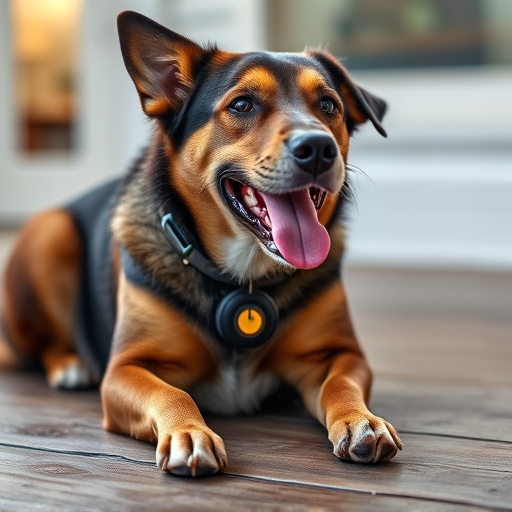Aggressive pet behavior, rooted in fear or past trauma, can be safely managed with effective distance electronic dog deterrents. These devices use ultrasonic sounds or vibrations to alert dogs non-punitively, encouraging behavioral change through training. With distances ranging from 3 to 15 feet, they're ideal for larger spaces or multiple areas. Key features include adjustable settings and clear instructions for optimal results.
“Aggressive pet behavior can be a significant concern for owners, leading many to seek effective solutions. One innovative approach gaining traction is the ultrasonic dog deterrent, a non-invasive technology designed to discourage unwanted actions. This article delves into understanding aggressive pet behavior and explores traditional deterrents. We then dive into the science behind ultrasonic devices, examining their operation and effectiveness over a substantial effective distance. Additionally, we provide key features and considerations for choosing the right electronic dog deterrent.”
- Understanding Aggressive Pet Behavior and Traditional Deterrents
- The Science Behind Ultrasonic Dog Deterrents: How They Work and Their Effectiveness
- Choosing the Right Ultrasonic Electronic Dog Deterrent: Key Features and Considerations for Success
Understanding Aggressive Pet Behavior and Traditional Deterrents
Aggressive pet behavior can stem from various factors, including fear, territorial instincts, or past trauma. When left unchecked, this behavior can pose significant risks to both the pet and those around them. Traditional deterrents often rely on physical corrections or loud noises to stop aggressive displays. However, these methods may not address the root cause of the behavior and can sometimes lead to further anxiety or aggression.
Electronic dog deterrents, particularly those with an effective distance range, offer a modern alternative. These devices use ultrasonic sounds or vibrations to alert dogs to their proximity, encouraging them to alter their behavior without resorting to physical punishment. By training pets to associate certain frequencies or signals with a change in environment or activity, owners can effectively manage and reduce aggressive tendencies, promoting safer interactions for both pets and humans.
The Science Behind Ultrasonic Dog Deterrents: How They Work and Their Effectiveness
Ultrasonic dog deterrents work by emitting a high-frequency sound wave that is inaudible to humans but disruptive to dogs. This technology leverages the animal’s sensitive hearing, which can detect sounds beyond human perception. When activated, the device emits an ultrasonic signal that travels through the air and targets the dog’s ears, causing discomfort or fear without causing physical harm. The effective distance of these devices varies, typically ranging from 3 to 15 feet (1 to 4.5 meters), depending on the model and environmental conditions.
While their effectiveness has been a subject of debate, many owners report positive results in modifying aggressive behaviors. The ultrasonic deterrent acts as a conditional reinforcement tool, teaching dogs to associate certain areas or actions with an unpleasant sound. Over time, this conditioning can help reduce unwanted behavior like barking, lunging, or biting. However, it’s important to note that not all dogs respond similarly, and consistent training alongside the use of such devices is crucial for optimal results.
Choosing the Right Ultrasonic Electronic Dog Deterrent: Key Features and Considerations for Success
When selecting an ultrasonic electronic dog deterrent, understanding key features is essential for success in managing aggressive pet behavior. Firstly, consider the effective distance of the device; ensure it covers the required area where your pet tends to exhibit aggression. Devices with longer ranges offer versatility, allowing you to protect larger spaces or multiple areas within your home or yard.
Additionally, look for adjustable settings that cater to different environments and pets. Some deterrents have multiple frequency levels, which can be beneficial as dogs have varying sensitivities. A device with a manual control option lets you adjust the sensitivity and tone according to your pet’s response. Remember, consistency and correct usage are key; choose a deterrent with clear operating instructions for optimal results.
Ultrasonic dog deterrents offer a humane and effective solution for managing aggressive pet behavior, especially within a specific effective distance of 30-50 feet. By leveraging sound waves, these devices provide an alternative to traditional deterrents, allowing pets to remain undisturbed in their environment. When choosing the right model, consider key features like adjustable frequency settings, weather resistance, and easy operation. With proper training and consistent use, an ultrasonic electronic dog deterrent can help create a calmer living space for both pets and owners alike.
